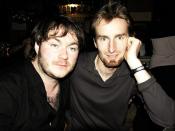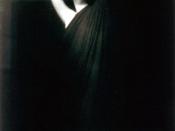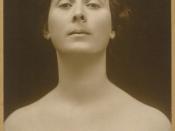Isadora Duncan was an American dancer whose creation of an expressive dance style based on the ancient Greeks laid the foundations for the modern American dancers of the twentieth century. Unlike other dancers of her time, Duncan danced with a flowing motion. She was not a ballerina, and greatly disliked watching ballet dancers with their stiff bodies and unnatural Pointe shoes. Her vision of dance was one of emotions, ideas, and the complete involvement of the body, soul, and mind. This forward thinking ideology represented not only the foundations of modern dance, but the foundations of the women's movement in the United States. Freedom of dance expression and freedom of personal expression would march hand and hand through the rest of the century.
Angela Isadora Duncan was born, one of four children, on May 26, 1877, in San Francisco, California. Her mother, Dora Duncan, was a piano teacher, and her father, Joseph Duncan, was a banker, journalist, and poet.
At the young age of five years old, Duncan began teaching neighborhood girls to dance by having them "sway their arms to express movement of ocean waves" (Belilove). After her parents' divorce, money became scarce in the Duncan household. At the age of 13, Duncan quit school to teach dance full time in order to earn money. It was in these early years of her life that Duncan's unique approach to dance began to take form.
The popular style of dance during the early twentieth century was ballet. Duncan thought ballet was "stiff and predictable" and believed the movements to be artificial and dull (Kozodoy 19). She thought ballet was a strict, unnatural form of dance in which every movement had to be exact and precise. Ballerinas used a sort of sign language or pantomime in order to tell their stories.


